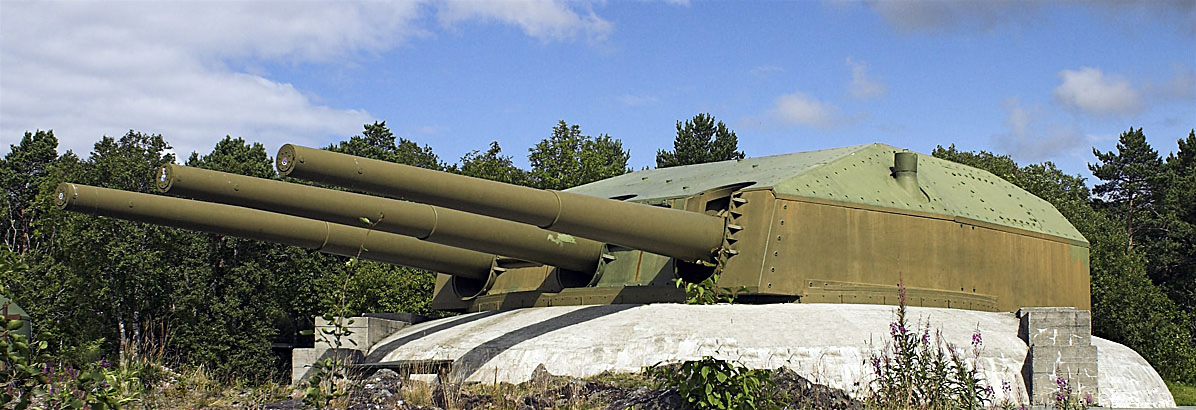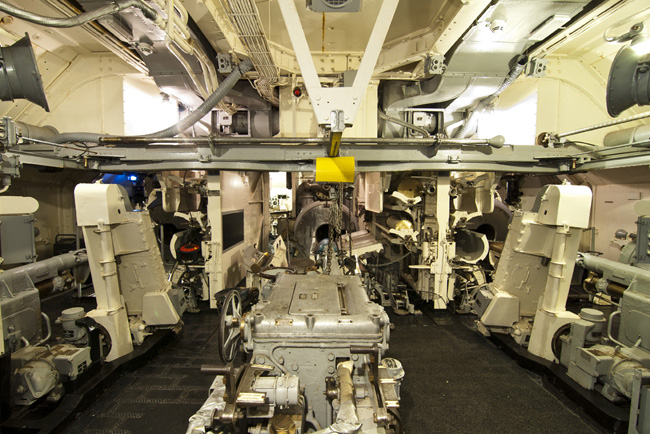Austrått Fort on:
[Wikipedia]
[Google]
[Amazon]
 Austrått Fort is a disused
Austrått Fort is a disused  The underground barracks and turret shaft with its ammunition rooms are open to the public. Because the Norwegians kept the site in operating condition until 1968, it remains in a good state of preservation. Today it is one of the most complete examples of a World
War II German coastal battery extant.
In addition, the site still has its infantry defenses consisting of trenches and a recently renovated 4.7 cm French-made anti-tank gun in working condition. The gun covers an anti-tank wall through the woods intended to protect the entrance of the complex.
The underground barracks and turret shaft with its ammunition rooms are open to the public. Because the Norwegians kept the site in operating condition until 1968, it remains in a good state of preservation. Today it is one of the most complete examples of a World
War II German coastal battery extant.
In addition, the site still has its infantry defenses consisting of trenches and a recently renovated 4.7 cm French-made anti-tank gun in working condition. The gun covers an anti-tank wall through the woods intended to protect the entrance of the complex.
 Austrått Fort is a disused
Austrått Fort is a disused coastal artillery
Coastal artillery is the branch of the armed forces concerned with operating anti-ship artillery or fixed gun batteries in coastal fortifications.
From the Middle Ages until World War II, coastal artillery and naval artillery in the form of c ...
site located at Austrått
Austrått or Austrått Manor ( no, Austråttborgen) is a manor in Ørland municipality in Trøndelag county, Norway. Since the 10th century, Austrått has been the residence for many noblemen, noblewomen, and officials who played a significant rol ...
in Ørland
Ørland is a municipality in Trøndelag county, Norway. It is part of the Fosen region. Ørland is located at the southwestern tip of the Fosen peninsula at the northern shore of the mouth of Trondheimsfjord where the Stjørnfjorden arm begins. ...
, Norway
Norway, officially the Kingdom of Norway, is a Nordic country in Northern Europe, the mainland territory of which comprises the western and northernmost portion of the Scandinavian Peninsula. The remote Arctic island of Jan Mayen and t ...
. It was constructed in 1942 by the German Wehrmacht
The ''Wehrmacht'' (, ) were the unified armed forces of Nazi Germany from 1935 to 1945. It consisted of the ''Heer'' (army), the ''Kriegsmarine'' (navy) and the ''Luftwaffe'' (air force). The designation "''Wehrmacht''" replaced the previous ...
to protect the Trondheimsfjord
The Trondheim Fjord or Trondheimsfjorden (), an inlet of the Norwegian Sea, is Norway's third-longest fjord at long. It is located in the west-central part of the country in Trøndelag county, and it stretches from the municipality of Ørland in ...
during the German occupation of Norway
The occupation of Norway by Nazi Germany during the Second World War began on 9 April 1940 after Operation Weserübung. Conventional armed resistance to the German invasion ended on 10 June 1940, and Nazi Germany controlled Norway until the ...
during World War II
World War II or the Second World War, often abbreviated as WWII or WW2, was a world war that lasted from 1939 to 1945. It involved the vast majority of the world's countries—including all of the great powers—forming two opposin ...
. The fort's centrepiece is a triple 28 cm SK C/34 (11-inch) gun turret from the German battleship ''Gneisenau'', which was damaged in Kiel
Kiel () is the capital and most populous city in the northern Germany, German state of Schleswig-Holstein, with a population of 246,243 (2021).
Kiel lies approximately north of Hamburg. Due to its geographic location in the southeast of the J ...
. The three-gun turret weighs 800 tons and was capable of firing 730-pound shells . The last firing took place in 1953 and the fort was decommissioned in 1968. It opened as a museum in 1991.
Like its sister battery at Sotra near Bergen
Bergen (), historically Bjørgvin, is a city and municipality in Vestland county on the west coast of Norway. , its population is roughly 285,900. Bergen is the second-largest city in Norway. The municipality covers and is on the peninsula of ...
, a shaft was cut out of the rocks for the huge former ''Gneisenau'' battleship gun turret. The triple 28 cm SK C/34 turret became available after the discontinuation of the Kriegsmarine battleships building programme in 1942. Turret Anton was split up in three separate barrels and placed at Fort Rozenburg in the Netherlands. Turret Bruno was installed in a shaft on Sotra, Norway. Turret Caesar was emplaced halfway up occupied Norway. About 650 Yugoslavian slave laborers, mostly Serbs
The Serbs ( sr-Cyr, Срби, Srbi, ) are the most numerous South Slavic ethnic group native to the Balkans in Southeastern Europe, who share a common Serbian ancestry, culture, history and language.
The majority of Serbs live in their na ...
( Partisans and Chetniks
The Chetniks ( sh-Cyrl-Latn, Четници, Četnici, ; sl, Četniki), formally the Chetnik Detachments of the Yugoslav Army, and also the Yugoslav Army in the Homeland and the Ravna Gora Movement, was a Yugoslav royalist and Serbian nationa ...
) worked under awful conditions on the tunnels and bunkers around the hill. In a short time, a large underground system with supporting bunkers was finished. In August 1943 the guns were test-fired. No real engagements occurred during the remainder of the war, however.
 The underground barracks and turret shaft with its ammunition rooms are open to the public. Because the Norwegians kept the site in operating condition until 1968, it remains in a good state of preservation. Today it is one of the most complete examples of a World
War II German coastal battery extant.
In addition, the site still has its infantry defenses consisting of trenches and a recently renovated 4.7 cm French-made anti-tank gun in working condition. The gun covers an anti-tank wall through the woods intended to protect the entrance of the complex.
The underground barracks and turret shaft with its ammunition rooms are open to the public. Because the Norwegians kept the site in operating condition until 1968, it remains in a good state of preservation. Today it is one of the most complete examples of a World
War II German coastal battery extant.
In addition, the site still has its infantry defenses consisting of trenches and a recently renovated 4.7 cm French-made anti-tank gun in working condition. The gun covers an anti-tank wall through the woods intended to protect the entrance of the complex.
References
Ørland Forts in Norway 1943 establishments in Norway Infrastructure completed in 1943 Military installations in Trøndelag {{SørTrøndelag-geo-stub